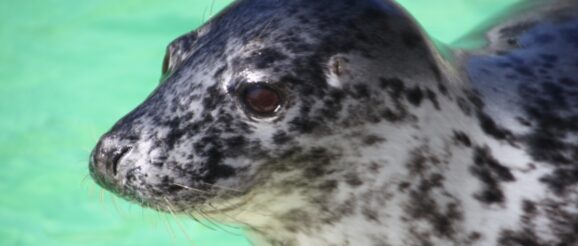Why don’t diving seals drown? Scientists finally have an answer

“In the first day, three divers blacked out underwater. So basically — ran too low on oxygen, lost consciousness,” he said. “To me, that was quite jarring to observe, but for the free divers, it was like, ‘Oh that just happens — it’s a thing.'”
It’s a thing because free divers can trick the body into thinking it has more air than it does by hyperventilating. That clears their systems of carbon dioxide, a gas that builds up when we hold our breath and that triggers the urge to breathe.
Seeing the human divers black out so often prompted McKnight to ponder something he hadn’t really thought about in seals. What keeps them from encountering a similar fate and drowning?

“The paper was really well done,” said Michael Tift, a biologist at the University of North Carolina Wilmington. “It’s a little bit of a surprising result, but actually it’s also not that surprising.”
Tift is not that surprised because of how seals process carbon dioxide. When most mammals hold their breath, CO2 builds up in the bloodstream. If animals don’t breathe to dispel CO2, concentrations of the gas can become harmful, which is why CO2 levels, not oxygen levels, generally trigger the urge to breathe.

“But in marine mammals, you don’t really see an increase in CO2 in the blood, because they have ways to essentially get rid of it,” he said, ultimately helping them stay underwater longer.
So it makes sense that seals would track oxygen levels instead, said Tift, but it has been really hard to demonstrate. “It’s just very difficult to work with these animals and to do studies to address specific questions.”
To figure it out, McKnight and his colleagues at the University of St. Andrews’ Sea Mammal Research Unit had to get creative. They built an experimental setup where wild-caught seals would breathe in a special, pyramid-shaped air chamber just big enough for a single seal’s head. Afterward, the seals would forage for food in an enclosed pool.
If the seals were tracking oxygen levels, you’d expect the high-oxygen treatment to yield longer dives and the low-oxygen treatment to yield shorter ones. That’s exactly what the researchers found.
In contrast, the seals didn’t really change their diving behavior in response to CO2, even when it was 200 times ambient levels. That was “a real surprise, because it has such a strong, perceptible effect on most mammals,” said McKnight.
These results suggest seals can cognitively perceive their internal oxygen levels and make decisions about how long to stay underwater based on that information. How their brains and bodies pull this off is another question, McKnight said, one that would need further study.
Still, he has some ideas. All mammals have the physiological ability to measure both oxygen and CO2 in their bodies, and essentially use the same hardware to do it, McKnight said. It’s the software, so to speak, that may change from species to species.
“We think there’s potentially a reconfiguration of how that information is processed, rather than changes in hardware,” he said, with information about oxygen getting routed to cognitive decision-making areas of the brain.
Given that shared hardware, McKnight thinks this ability might extend to other diving mammals or perhaps even reptiles and birds that have evolved to make a living underwater. “We think there might be a broad convergent evolution of this trait,” he said, since “all face the same issue … if you run out of oxygen, you’ll drown.”
